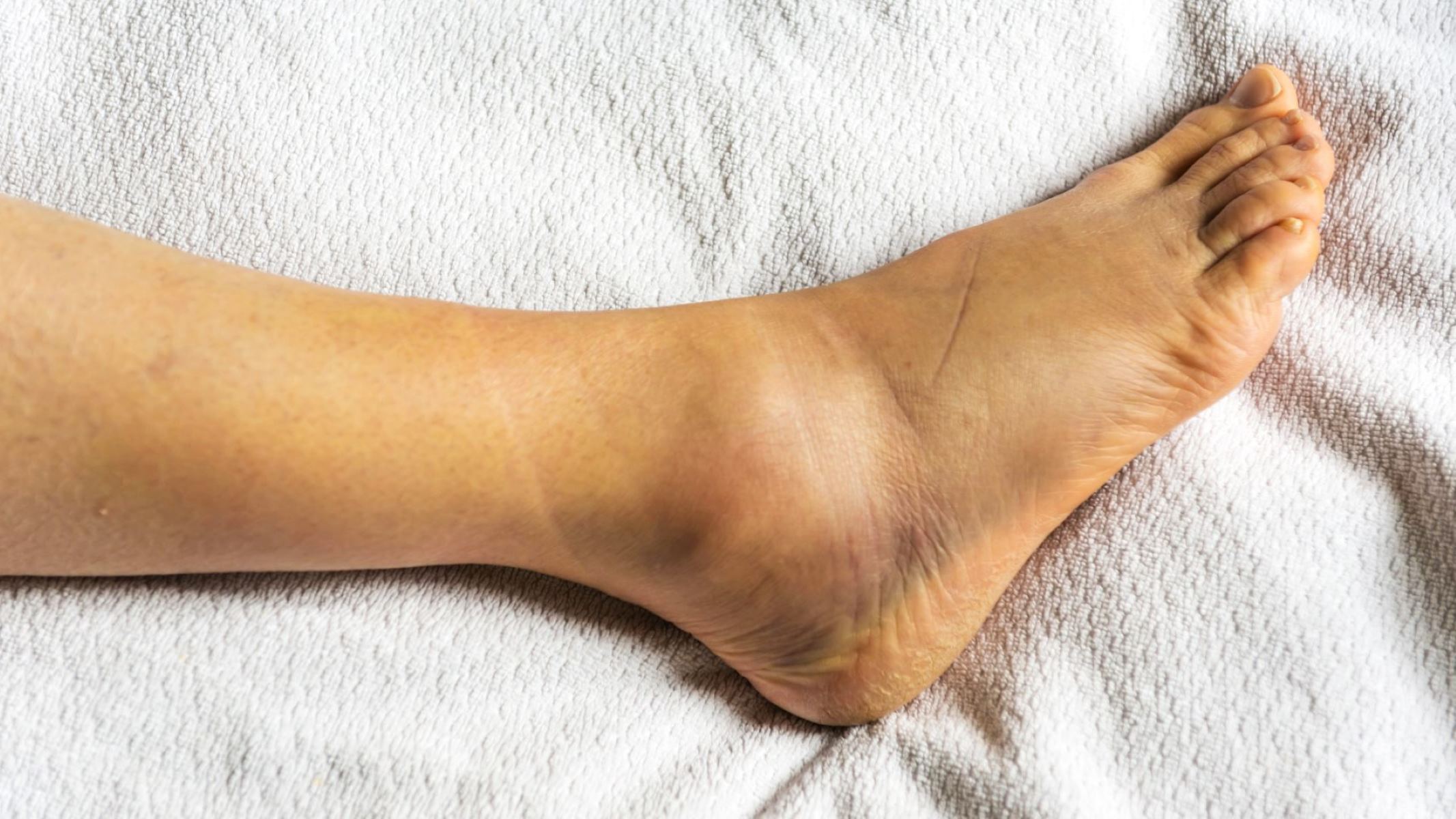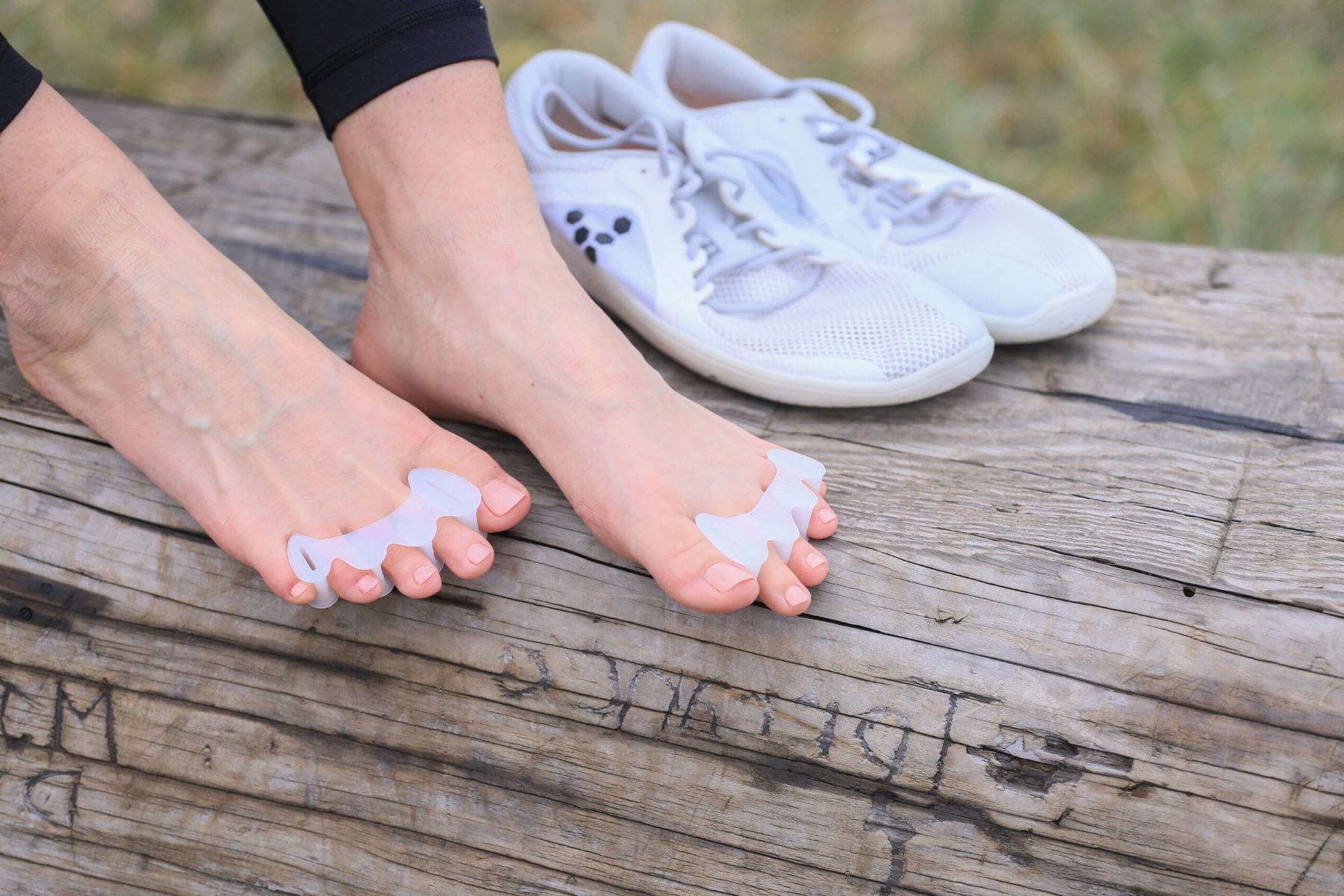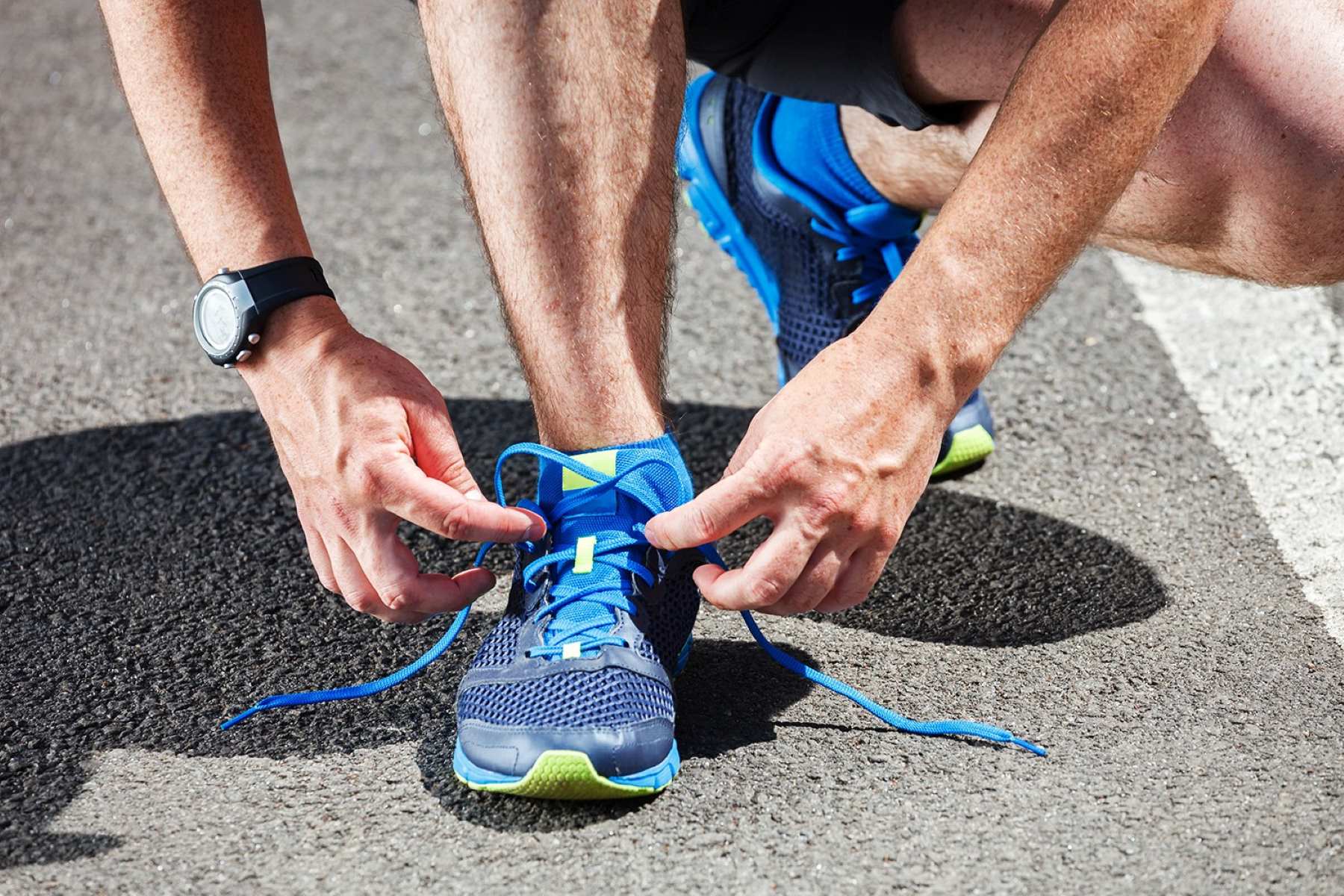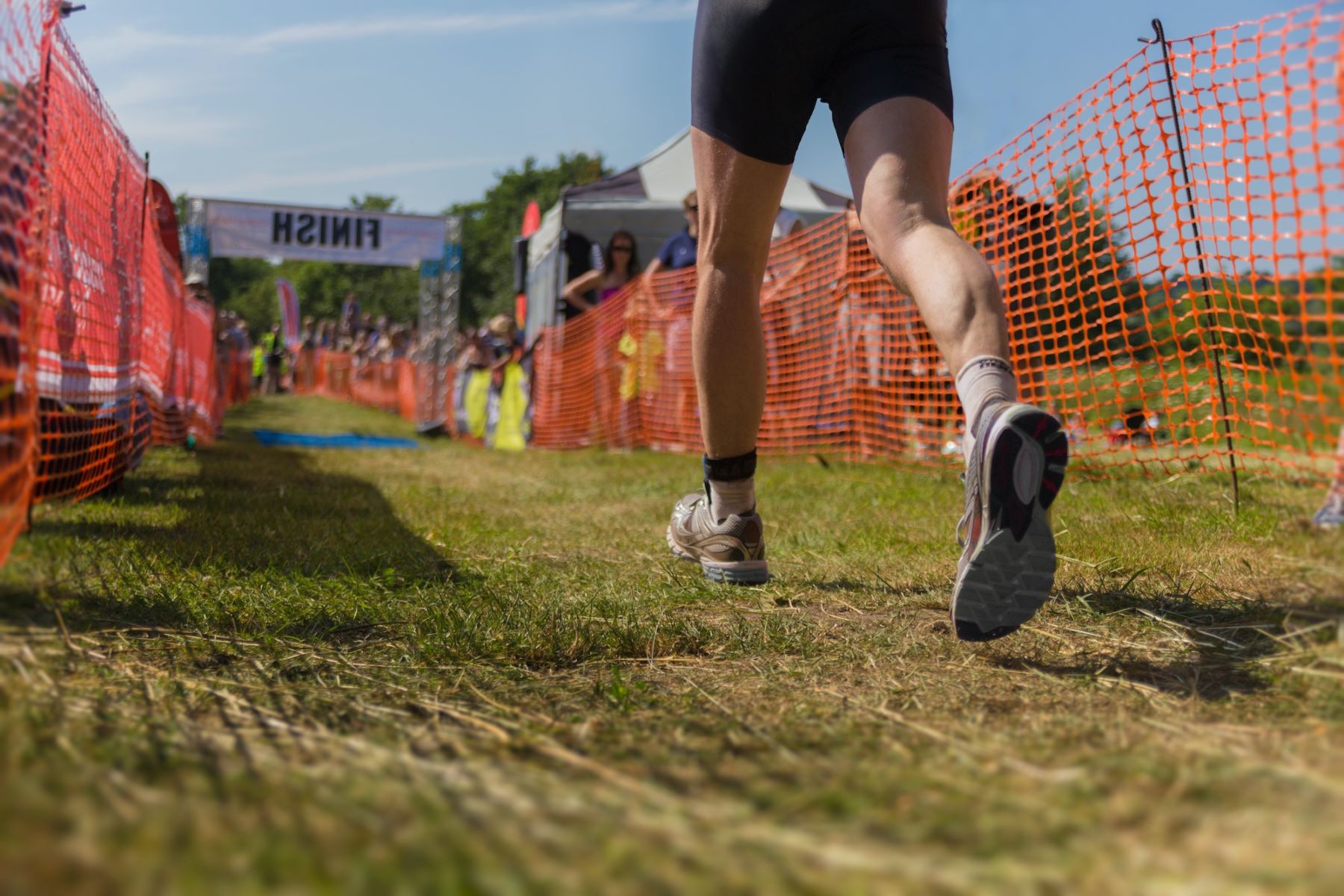Home>Health & Nutrition>Injury Prevention>How Can I Continue Running After Breaking My Ankle?


Injury Prevention
How Can I Continue Running After Breaking My Ankle?
Published: February 27, 2024
Learn effective injury prevention strategies to continue running after breaking your ankle. Discover tips and techniques to safely maintain your running routine.
(Many of the links in this article redirect to a specific reviewed product. Your purchase of these products through affiliate links helps to generate commission for Therunningadvisor.com, at no extra cost. Learn more)
Table of Contents
Understanding the severity of the ankle injury
An ankle injury, such as a fracture or a severe sprain, can significantly impact your ability to run. Understanding the severity of the injury is crucial for determining the appropriate course of action to facilitate a safe return to running.
When dealing with an ankle injury, it's essential to assess the extent of the damage. Ankle fractures, for instance, can vary in severity, ranging from hairline fractures to complete breaks. Additionally, sprains can be classified as mild, moderate, or severe based on the extent of ligament damage. Understanding the specific nature of the injury is vital for devising an effective recovery plan.
Moreover, the location of the injury within the ankle joint can influence its severity. For instance, a fracture or sprain involving the weight-bearing bones of the ankle, such as the tibia and fibula, may require more extensive treatment and recovery compared to injuries affecting the smaller bones or ligaments.
Furthermore, the presence of any associated injuries, such as ligament tears or soft tissue damage, can complicate the recovery process and necessitate a more comprehensive approach to rehabilitation.
By comprehensively understanding the severity of the ankle injury, individuals can make informed decisions regarding their treatment and recovery plan, ensuring that they take the necessary steps to promote healing and minimize the risk of exacerbating the injury during the return to running.
Seeking medical advice and treatment options
Seeking prompt medical attention is paramount when dealing with an ankle injury, especially if you aim to resume running. Consulting a healthcare professional, such as an orthopedic specialist or a sports medicine physician, is crucial for obtaining an accurate diagnosis and personalized treatment plan.
Upon seeking medical advice, the healthcare provider will conduct a thorough examination of the ankle, which may include physical assessments and diagnostic imaging, such as X-rays or MRI scans. This comprehensive evaluation enables the healthcare professional to determine the precise nature and extent of the injury, facilitating the development of an appropriate treatment strategy.
Based on the diagnosis, the healthcare provider will discuss various treatment options tailored to the specific injury. For mild to moderate ankle sprains, conservative measures such as rest, ice, compression, and elevation (R.I.C.E.), along with the use of supportive braces or splints, may be recommended to promote healing and reduce swelling. Additionally, non-steroidal anti-inflammatory drugs (NSAIDs) may be prescribed to alleviate pain and inflammation during the initial phase of recovery.
In cases of more severe ankle injuries, such as fractures or ligament tears, the treatment approach may involve immobilization through the use of a cast or walking boot to stabilize the ankle and facilitate proper healing. In some instances, surgical intervention may be necessary to realign and stabilize fractured bones or repair extensively damaged ligaments.
Furthermore, healthcare professionals may recommend physical therapy to aid in the rehabilitation process. Physical therapists can design customized exercise programs to improve ankle strength, flexibility, and range of motion, thereby enhancing the overall stability and function of the joint. Engaging in targeted rehabilitation exercises under the guidance of a skilled therapist is instrumental in restoring the ankle's functionality and preparing it for the demands of running.
In addition to conventional medical treatments, alternative therapies such as acupuncture, chiropractic care, or specialized modalities like ultrasound therapy may be considered to complement the recovery process and alleviate discomfort.
Ultimately, seeking medical advice and exploring the available treatment options empowers individuals to make informed decisions regarding their ankle injury management. By adhering to the guidance of healthcare professionals and actively participating in the prescribed treatment regimen, individuals can optimize their chances of a successful recovery and eventual return to running.
Rehabilitation exercises and physical therapy
Rehabilitation exercises and physical therapy play a pivotal role in the recovery process following an ankle injury, serving as essential components of a comprehensive treatment plan aimed at restoring strength, mobility, and function to the affected joint.
Upon receiving clearance from a healthcare professional, individuals can embark on a structured rehabilitation program designed to address the specific impairments resulting from the ankle injury. Physical therapists, in collaboration with orthopedic specialists, devise tailored exercise regimens that target the affected ankle, encompassing a diverse range of movements and activities to promote healing and enhance overall joint functionality.
Early-stage rehabilitation
During the initial phase of rehabilitation, emphasis is placed on reducing pain and swelling while gradually reintroducing mobility to the injured ankle. Range of motion exercises, such as ankle circles and gentle dorsiflexion and plantarflexion movements, are employed to prevent stiffness and promote flexibility. Additionally, non-weight-bearing exercises, such as toe curls and alphabet tracing with the toes, aid in maintaining muscle tone and circulation without placing undue stress on the injured joint.
Strengthening exercises
As the ankle progresses in its healing, targeted strengthening exercises become integral to the rehabilitation process. Therapists prescribe exercises that focus on building strength in the muscles surrounding the ankle, including the calf muscles, tibialis anterior, and intrinsic foot muscles. These exercises may involve resistance bands, ankle weights, or bodyweight movements to progressively challenge the muscles and improve their capacity to support the ankle joint during weight-bearing activities.
Balance and proprioception training
Reestablishing proprioception, the body's awareness of its position in space, is a key objective in ankle rehabilitation. Therapists incorporate balance exercises, such as single-leg stance variations and stability ball drills, to enhance proprioceptive feedback and improve the ankle's ability to maintain stability during dynamic movements. These exercises not only aid in preventing future injuries but also contribute to the overall functional recovery of the ankle.
Gait training and functional activities
As the ankle approaches full recovery, gait training and functional activities are integrated into the rehabilitation program to simulate real-world movement patterns. Therapists guide individuals through walking and jogging drills, gradually increasing the intensity and duration to prepare the ankle for the demands of running. Functional activities, such as agility drills and plyometric exercises, are introduced to enhance the ankle's capacity to withstand the forces encountered during running and other athletic pursuits.
Ongoing support and progression
Throughout the rehabilitation process, therapists closely monitor progress and make necessary adjustments to the exercise regimen to ensure continued improvement. As individuals demonstrate proficiency in performing exercises and exhibit enhanced ankle stability, therapists may introduce advanced challenges to further fortify the ankle and prepare it for the rigors of running.
By diligently adhering to the prescribed rehabilitation exercises and actively engaging in physical therapy sessions, individuals can expedite their recovery and cultivate the strength and resilience needed to resume running with confidence. The structured and progressive nature of rehabilitation exercises and physical therapy fosters a gradual return to optimal function, empowering individuals to overcome the limitations imposed by the ankle injury and pursue their passion for running once again.
Utilizing assistive devices for support
In the journey toward resuming running after an ankle injury, the strategic use of assistive devices can significantly aid in providing the necessary support and stability for the recovering joint. These devices are instrumental in mitigating excessive strain on the injured ankle while facilitating a gradual return to weight-bearing activities. By leveraging the benefits of assistive devices, individuals can navigate the transitional phase of recovery with enhanced confidence and reduced risk of re-injury.
Ankle Braces and Supports
Ankle braces and supports serve as valuable tools in providing external stability to the injured joint. These devices are designed to limit excessive ankle movement, thereby reducing the risk of sudden twists or sprains during weight-bearing activities. Depending on the severity of the ankle injury and the stage of recovery, healthcare professionals may recommend specific types of ankle braces, such as lace-up braces, stirrup braces, or rigid ankle supports, to cater to the unique needs of the individual. By securing the ankle in a supportive yet adjustable manner, these devices offer a protective mechanism that bolsters the joint's resilience as individuals gradually reintegrate running into their routine.
Orthotic Inserts and Customized Insoles
Orthotic inserts and customized insoles play a pivotal role in optimizing foot and ankle alignment, thereby promoting proper weight distribution and reducing undue stress on the injured ankle. These specialized inserts are tailored to address individual biomechanical imbalances and provide targeted support to the arches and heels, fostering optimal foot positioning during running. By enhancing overall foot mechanics and minimizing excessive pronation or supination, orthotic inserts contribute to a more stable and controlled gait, which is essential for safeguarding the recovering ankle from unnecessary strain.
Walking Boots and Air Casts
In cases of more severe ankle injuries, walking boots and air casts are often prescribed to immobilize and protect the joint during the initial phases of recovery. These devices offer a high level of support and stability, effectively restricting ankle movement while allowing individuals to engage in controlled weight-bearing activities. Walking boots, equipped with adjustable straps and cushioned interiors, facilitate a gradual transition from non-weight-bearing to partial weight-bearing, enabling individuals to progressively acclimate the injured ankle to the demands of walking and, eventually, running.
Assistive Devices for Aquatic Therapy
Aquatic therapy, characterized by exercises performed in a buoyant and supportive aquatic environment, can be instrumental in the rehabilitation of ankle injuries. Utilizing assistive devices such as aquatic ankle weights, flotation devices, and resistance bands tailored for water-based exercises can enhance the effectiveness of aquatic therapy sessions. These devices aid in providing targeted resistance and support, allowing individuals to engage in low-impact strengthening and range of motion exercises that promote ankle recovery without subjecting the joint to excessive stress.
By strategically incorporating these assistive devices into the recovery process, individuals can optimize the support and protection afforded to the injured ankle, paving the way for a gradual and sustainable return to running. The judicious use of these devices, in conjunction with comprehensive rehabilitation and medical guidance, empowers individuals to navigate the complexities of ankle injury recovery with resilience and determination, ultimately leading to a successful resurgence in their running pursuits.
Gradually returning to running with caution
Returning to running after an ankle injury demands a cautious and methodical approach to ensure a safe and sustainable transition back to this high-impact activity. The process of resuming running involves a series of progressive steps aimed at reacquainting the injured ankle with the demands of weight-bearing and dynamic movement. By adhering to a carefully structured plan and exercising patience, individuals can mitigate the risk of re-injury and gradually rebuild their running capabilities.
Establishing a Foundation of Strength and Stability
Before embarking on the journey back to running, it is imperative to lay a solid foundation of strength and stability within the injured ankle. This entails diligently adhering to the prescribed rehabilitation exercises and physical therapy regimen to fortify the muscles, ligaments, and tendons surrounding the ankle joint. By systematically enhancing the ankle's strength, flexibility, and proprioception, individuals cultivate the resilience needed to withstand the rigors of running.
Incremental Weight-Bearing Progression
The process of reintroducing weight-bearing activities, including walking and light jogging, forms a crucial phase in the return to running. Gradually transitioning from non-weight-bearing exercises to partial weight-bearing activities allows the ankle to adapt to increasing loads and forces. This incremental progression minimizes the likelihood of overburdening the healing tissues while promoting gradual adaptation to the impact forces associated with running.
Monitoring Pain and Discomfort
As individuals commence light jogging and running drills, it is essential to remain vigilant in monitoring any signs of pain, discomfort, or instability in the injured ankle. Occasional soreness or mild discomfort may be expected during the initial stages of running reintroduction; however, persistent or escalating pain warrants immediate attention and may indicate the need to modify the running regimen or seek further medical evaluation.
Embracing Rest and Recovery
Incorporating adequate rest periods between running sessions is paramount for allowing the ankle to recuperate and adapt to the increased demands placed upon it. Balancing running activities with sufficient rest intervals enables the body to repair and strengthen the ankle structures, fostering a progressive adaptation to the physical stresses encountered during running.
Gradual Increase in Intensity and Duration
As the ankle demonstrates resilience and adaptability to running, individuals can gradually augment the intensity and duration of their running sessions. Incrementally extending the duration of running intervals and incorporating gentle inclines or varied terrains facilitates a gradual reconditioning of the ankle and prepares it for more demanding running activities.
Emphasizing Proper Form and Technique
Focusing on maintaining proper running form and technique is instrumental in safeguarding the recovering ankle from undue strain. Paying attention to posture, foot strike, and stride mechanics not only reduces the risk of exacerbating the injury but also promotes efficient and sustainable running performance.
By meticulously adhering to these principles and gradually reintroducing running with caution, individuals can navigate the complexities of ankle injury recovery with prudence and determination. This deliberate approach fosters a safe and sustainable return to running, empowering individuals to reclaim their passion for this invigorating and fulfilling activity.












